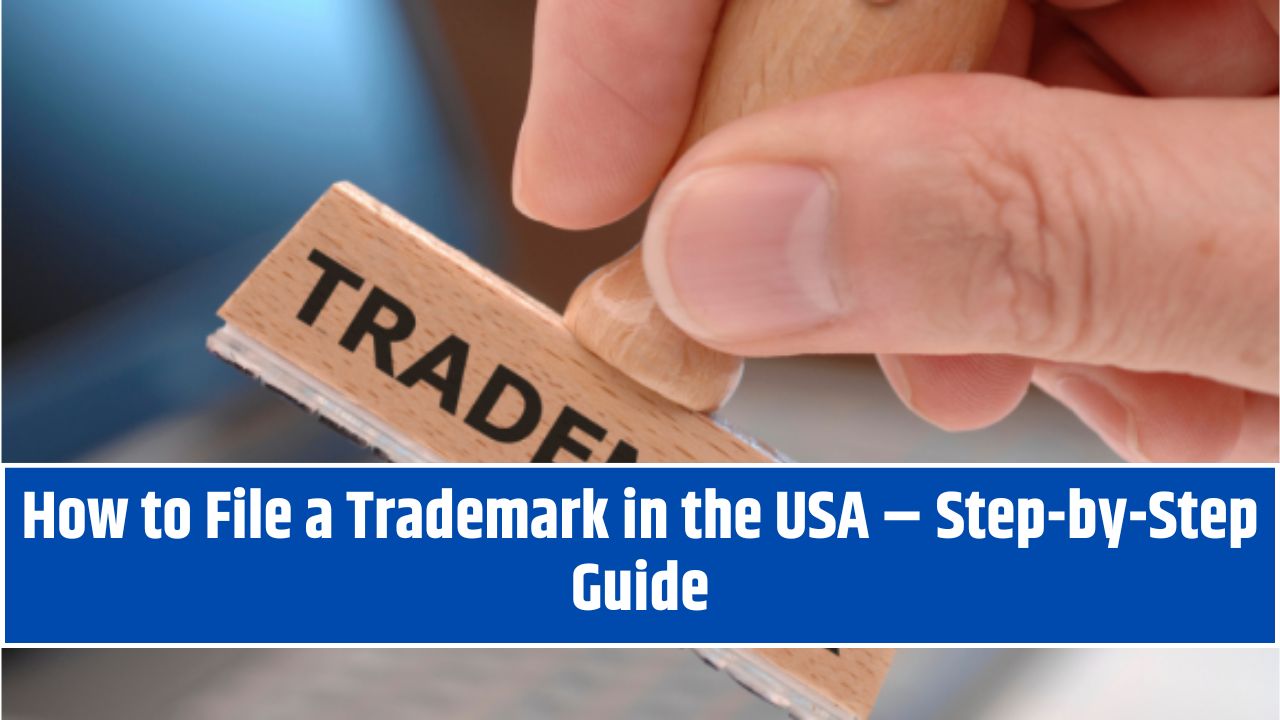EVERYONE THINKS THEY OWN THEIR BRAND… UNTIL THEY DON’T.
Let’s just start there. Brutal? Maybe. But totally true.
You could pour your soul into a business name, whip up the most drool-worthy logo, and launch your dream product… only to get slapped with a cease and desist from someone who actually owns the trademark. I’ve seen it happen to startups, coaches, even influencers with millions of followers. One day they’re soaring. The next day? Rebranding scramble mode.
So, let’s avoid that mess.
This is your no-fluff, totally human, step-by-step guide to filing a trademark in the U.S. And I’ll be honest—it’s not exactly a walk in the park, but it’s not climbing Everest either. I’ll break it down like we’re talking over tacos. Ready?
Wait, So What IS a Trademark Anyway?
Before we even get into the nitty-gritty, let’s clear up what we’re actually protecting.
A trademark is like your brand’s armor. It protects anything that identifies your business—like your logo, brand name, slogan, packaging look, or even a unique sound (yep, like the Netflix “ta-dum” thing). Once it’s registered, you get exclusive rights to use it in commerce within your category.
Cool, right?
Okay, let’s roll.
Step 1: Make Sure It’s Not Already Taken
Yes, I know, you love your name. You might’ve even dreamed it up in the shower and texted it to yourself mid-shampoo.
But… is it available?
You’ve gotta check.
Here’s how:
- Head over to the USPTO Trademark Electronic Search System (TESS)
- Type in your brand name or logo text
- Browse through results and look for:
- Spelling variations
- Similar pronunciation
- Similar industry (a pizza place called “Applle” won’t fly, Apple will come for you)
Pro tip: Don’t just search for exact matches. Think like a sneaky lawyer. If your name sounds like someone else’s in the same field, that’s enough to get rejected.
If you see something sketchy or similar… it might be worth brainstorming a new name before you go further. Harsh, I know, but better now than after printing 1,000 t-shirts.
Step 2: Decide What Type of Trademark You’re Filing
There’s more than one way to do this. You can trademark:
- A word or phrase (like “Nike” or “Just Do It”)
- A design/logo
- A combination of both
- A sound, color, or packaging look (yup, Tiffany blue is a registered trademark)
Pick what you need. Most people file a standard character mark (words only) for flexibility, especially early on.
Step 3: Choose the Right Filing Basis
Here’s where most people go, “Wait, what now?”
You’ll have to pick how you’re filing. There are two main options:
Option 1: “Use in Commerce”
You’re already using the name or logo in business. You’re out there selling, promoting, operating.
You’ll need:
- A product photo showing the name/logo in use
- A website or social media link showing real use
Option 2: “Intent to Use”
You’re not selling yet, but you plan to soon.
This is great for people pre-launch. You’ll still file now, but once approved, the USPTO will ask you to prove usage later (within 6 months to 3 years).
Step 4: Identify the Class(es) of Goods or Services
This part can get weirdly complicated.
Trademarks are filed under specific “classes.” Think of them like categories—clothing, cosmetics, education, etc.
For example:
- Selling t-shirts? That’s Class 25.
- Coaching services? Probably Class 41.
- Skincare products? Class 3.
Each class you choose costs money (currently $250–$350 per class). So don’t overdo it—but don’t underdo it either. If you sell candles and mugs, you probably need more than one class.
Pro tip: You can check out the USPTO ID Manual to see descriptions and classes.
Step 5: File Your Application with the USPTO
Okay, this is the big moment. You’ve done the digging. You’re ready.
Go to the USPTO’s Trademark Electronic Application System (TEAS).
You’ll choose between:
- TEAS Plus – $250 per class, fewer options, but cheaper
- TEAS Standard – $350 per class, gives you more wiggle room
If your brand name uses plain text (no funky fonts or images), go with TEAS Plus. It’s cleaner and cheaper.
You’ll need to:
- Upload proof (if using “use in commerce”)
- Describe your goods/services
- Pick the correct class(es)
- Confirm ownership info
- Pay that fee!
Once filed, you’ll get a serial number. It’s like your baby’s social security number, but for brands.
Step 6: The Waiting Game (and Monitoring)
Now you wait. And wait. And maybe… wait some more.
The USPTO usually takes 6–9 months to review your app. Sometimes longer.
You can check the status at TSDR. Bookmark it.
One day you might see:
- “Published for Opposition” – This means your trademark is almost approved. It’s open for others to object (rare, unless you’re stepping on someone’s toes).
- Office Actions – Basically, a fancy way of saying “there’s a problem.” Could be minor (“describe this better”) or serious (“this is too close to XYZ brand”).
Don’t panic. You usually have 3–6 months to respond.
If nobody objects and the USPTO is happy? You get that sweet, sweet ® symbol.
Step 7: Maintain and Protect It
Owning a trademark isn’t a one-and-done. You’ve gotta keep it alive.
After registration, you’ll need to:
- File a Declaration of Use between years 5–6
- Renew every 10 years
- Keep using the mark in commerce (abandoned marks can be challenged!)
Also… enforce it. If someone starts using your brand name? You’ve gotta act. This is YOUR territory now.
BONUS: Should You Hire a Lawyer?
Okay, real talk: the USPTO does not require an attorney for U.S.-based applicants.
But… if your brand is your baby and you don’t want to mess this up, having a trademark attorney can be a game-changer—especially if:
- You’re filing multiple classes
- You get hit with an Office Action
- You’re planning international trademarks too
I know plenty of business owners who DIY’d it and were fine. I know just as many who had to pay double to fix a mess later.
TL;DR – Let’s Wrap This Up
Filing a trademark might sound scary, but when you break it down, it’s just:
- Check it’s not taken
- Decide what to protect (word, logo, etc.)
- Choose “use” vs. “intent to use”
- Pick the right class(es)
- File with the USPTO
- Wait and watch for updates
- Maintain and enforce it
A registered trademark gives you peace of mind. It says, “This brand is MINE.”
And that? That’s priceless.
So if you’ve been stalling on this, consider this your nudge. Protect your hustle. Name it, own it, lock it down.
Final Thoughts (Or: Me Getting a Bit Mushy Here)
I’ve helped friends, clients, even my own small business go through the trademark process. Every time, the moment that ® symbol hits your brand name? It feels legit. Like, “Wow, I own this thing.”
It’s more than paperwork. It’s power. It’s presence. It’s protection.
You built something worth claiming.
Now claim it.
Got questions about this? Thinking about filing? Shoot me a DM or drop a comment. I love nerding out over this stuff.
And hey—don’t forget to grab a snack. Trademarks are serious, but snacks are sacred.




